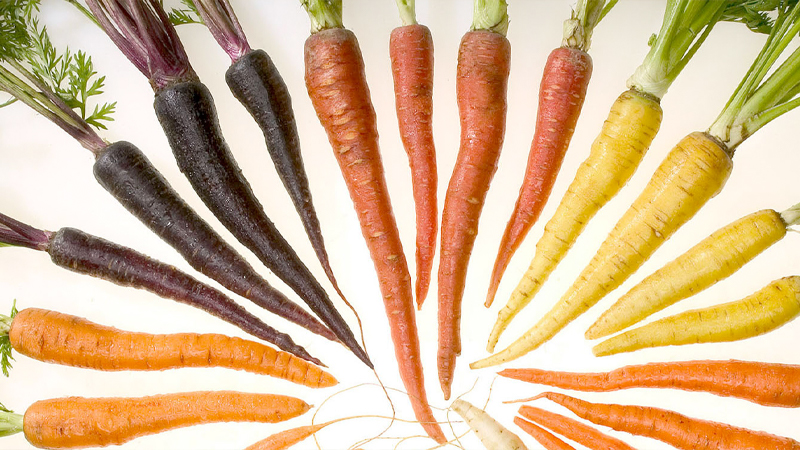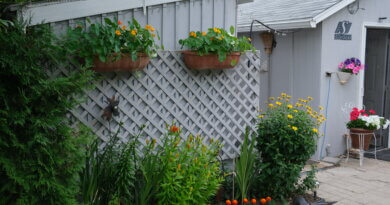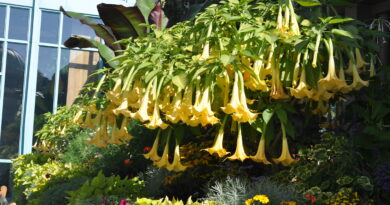Carrots – Yummy, Crunchy
Carrots are easy to grow and are filled with vitamins and minerals, it’s no wonder they are the vegetable of the year!
What is more fun or easier to grow than carrots? This root vegetable, Daucus carota, has been in vogue in Western culture since Roman times, when it was purple, black or red rather than orange. But Western cultures have no lock on carrots, which are one of the most important food crops grown in the many countries of southeast Asia, including the Philippines and China, which is the world’s top producers. In fact, they originated in central Asia, probably Afghanistan, where they are also an important crop.
Carrots are members of the Apiaceae family, which also includes culinary plants such as anise, celery, coriander (cilantro), dill and parsnips. They are biennials, meaning that they will flower in the second year of growth, but are typically grown as annuals (grown and harvested in the same year). There are several different types and they are primarily divided up by shape.
Carrots are undemanding, asking only for some well-drained, sandy soil with no obstacle in the way of their taproots. They can easily be grown in containers deep enough for their roots and they like the cool temperatures of late spring and early fall. And best of all, they don’t have to be planted in regimented rows; they will grow perfectly well among the flowers in your cultivated garden and lend it interest with their ferny leaves.
If your garden has light, peaty soil, all the better for carrots. They like a pH level of about 6.5 to 7.5, which is fairly neutral, and will thrive if they get the odd dose of potassium.
Plant carrot seeds about two centimetres deep and cover with a half centimetre of soil. Soil temperatures of 18 to 24 C (65 to 75 F) are best for germination. They take 14 to 21 days to germinate so don’t despair if you don’t see immediate results. Some people advise planting fast germinating radish between carrots to help you remember where they are.
Harvest as you go along, using the small immature carrots as a treat and thinning out the seedlings to allow room to let the remainder of the carrots get larger. By the way, the greens are also edible, although somewhat bitter. They are filled with vitamin K, A and C, potassium, chlorophyll and contain calcium and iron.
Cilantro Lime Roasted Carrots
Ingredients:
3 pounds carrots (or mixed carrots and parsnips)
1/4 cup butter
1/4 tsp cumin seeds (optional)
1/4 tsp sea salt
1/2 cup finely chopped cilantro
(If you’re not a cilantro fan substitute parsley)
Zest of one lime, and fresh squeezed lime juice
Instructions
- Peel the carrots and remove the tops. Sliced in thinner rounds will cook faster.
- Steam carrots to desired doneness and drain.
- Melt butter, salt and cumin seeds in a warmed pan and pour over top of the carrots, toss to coat.
- Add freshly squeezed lime juice, chopped fresh cilantro and lime zest over the carrots just prior to serving.
- This recipe also works well on large cuts of carrots roasted in an oven heated to 375 F. Use olive oil instead of butter and roast for approximately 30 minutes.

Types of Carrots
Chantenay – Conical, triangular shaped roots with broad shoulders and rounded tips. Their sweet flavour makes them a wonderful treat to eat fresh.
Danvers – Cylindrical, thick roots that are often used to make carrot juice due to their high water content and low sugar content.
Imperator – Long, tapered roots with narrow shoulders. This is the variety you are most likely to find in the grocery store.
Miniature/Baby – Either small round roots (also called Planet-types) or cylindrical and short. (Not the type sold in grocery stores. The mini-peeled ones found in stores are actually broken large carrots.)
Nantes – Cylindrical, “cigar-shaped” roots that are sweet and crispy.







